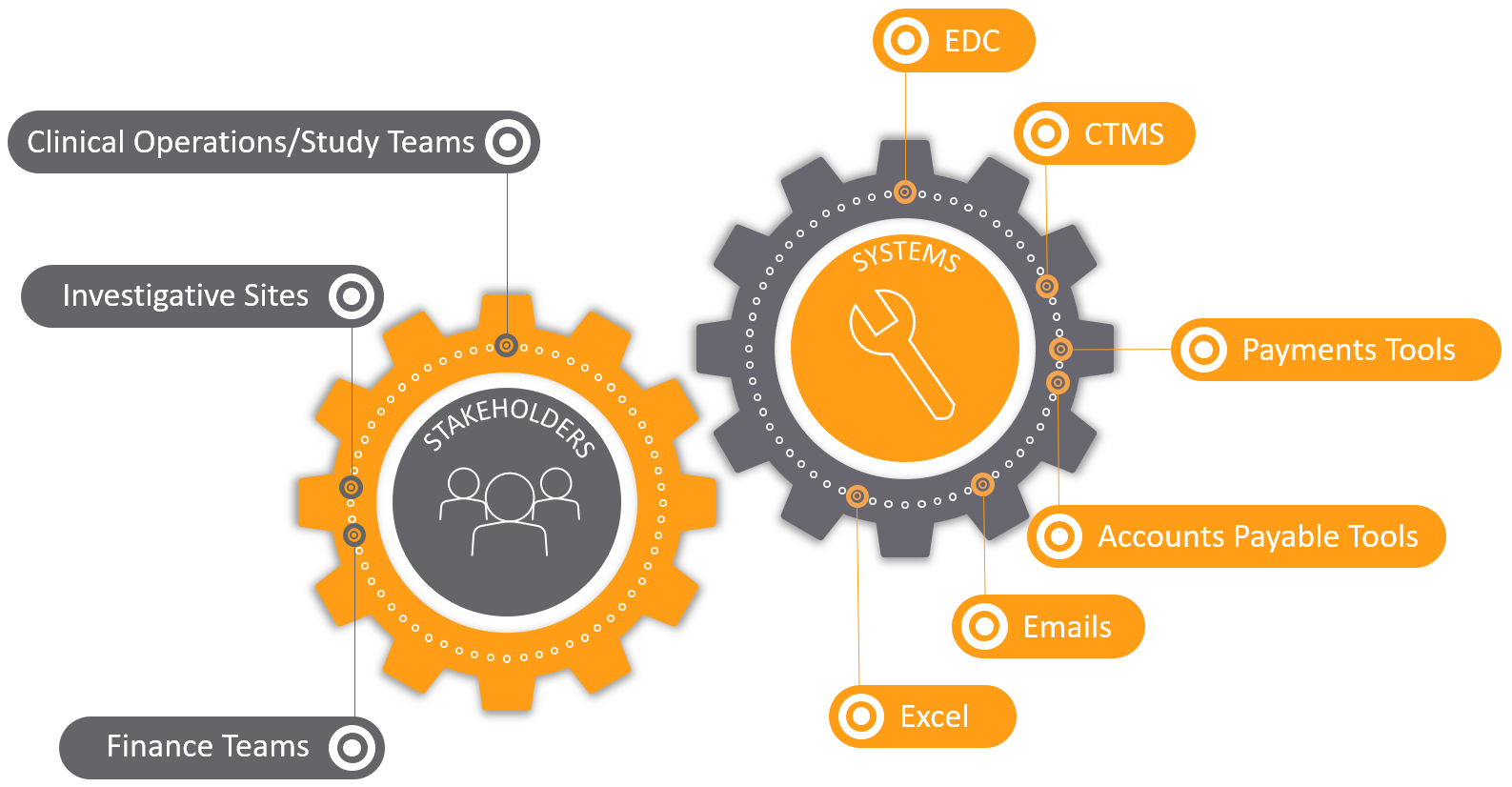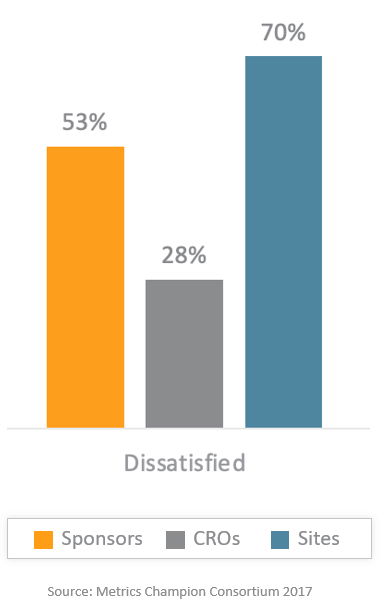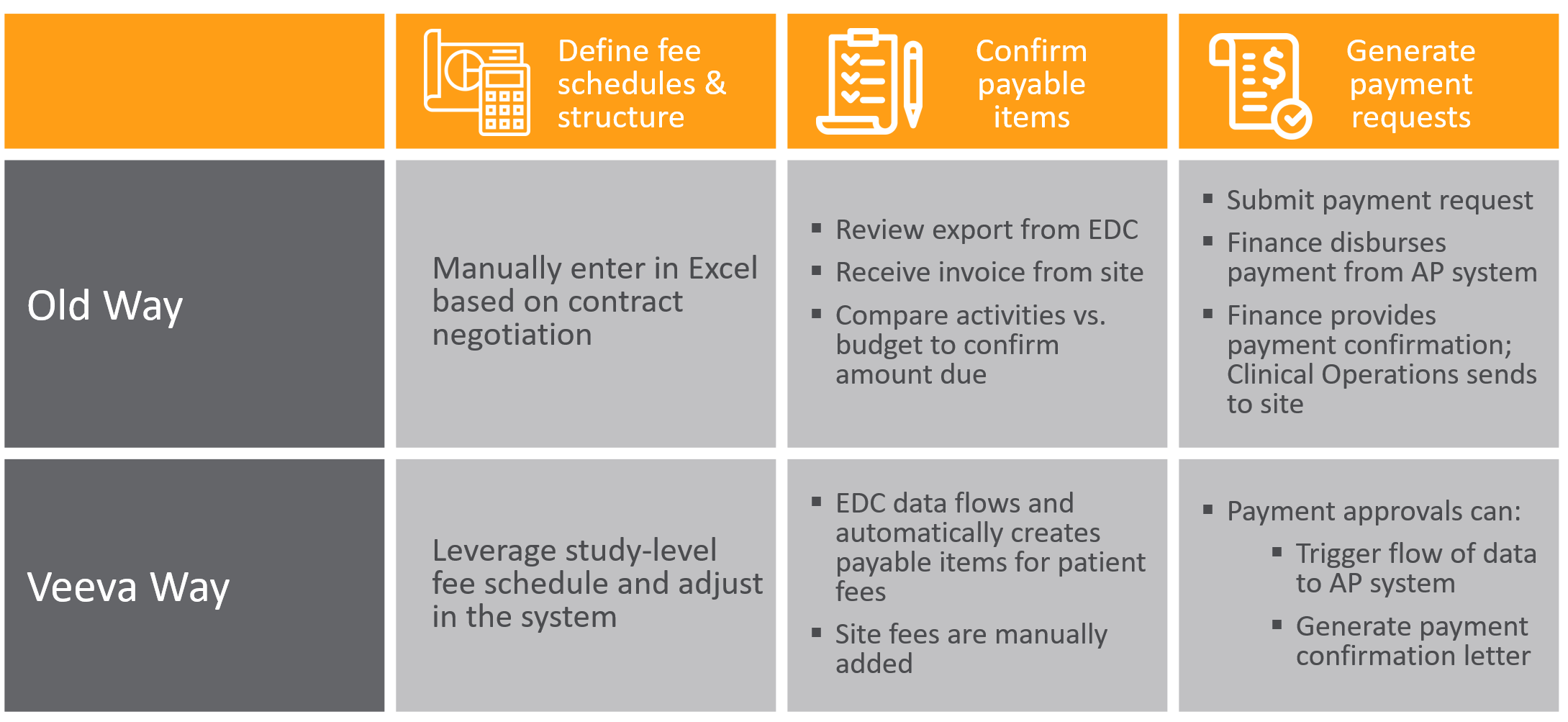Blog
Advancing Site Payments: A Win-Win for All
Jan 20, 2022 | Chris McSpiritt
Jan 20, 2022 | Chris McSpiritt
We live in a world where we can make a purchase on Amazon with a click and refinance our home on an app, but clinical trial payments often lag due to antiquated processes. When I talk to sponsors and CROs about how they pay sites, many wish they could automate processes to work more efficiently. Manual effort is required to extract the data that determines what sites need to be paid and when – and oftentimes this data comes from multiple systems. Additionally, because payments involve clinical research sites, clinical operations teams, and finance teams, data flows and reconciliation become even more challenging due to disparate technologies and ways of working.

Pain causes dissatisfaction amongst all stakeholders
This manual flow of data between systems and teams causes very tangible challenges that hinder the ability to pay sites on time for the hard work they do in support of clinical trials.
- Manual activities and workarounds reduce efficiency and extend payment timelines, leading to potential cash flow issues for sites
- These same manual activities cause inaccuracies – sites getting paid too little, too much, or sometimes even getting paid twice for the same activity
- Every company wants clear visibility to cash outflows and timing, yet this is nearly impossible when companies rely on manual processes
Satisfaction with current payment model by organization type

While the data from the chart above is from 2017, not much progress has been made since then. Based on the conversations I have with industry professionals, the majority of sponsors and sites are dissatisfied with the payments process and feel there is a better way.
Automation can lead to efficiencies
Rather than struggle with manual processes that add work, a better future can be achieved by automating critical tasks. When we built Vault Payments, we set out to minimize trackers, manual invoice processing, reconciliation across tools, and offline communication. Automation enables team members to focus on value-add activities such as strengthening site relations.
When we evaluated the opportunities to streamline with automation, we focused on simplifying three key components:
- Defining and entering the fee schedule and structure for a site
- Accessing the data and information needed to pay a site
- Executing and documenting the site payment
For the first component, we focused on replacing multiple Excel spreadsheets that study teams maintain to document a site’s study budget with an application that enables data reuse to jumpstart the definition for a given site. Centralizing the data in a system is more efficient and also helps with reporting and analytics.
For the second component, we focused on automating the collection of payable items by extracting data from an EDC or IRT system to document the visits and procedures that have occurred. While study teams can manually enter a payable item in Vault Payments, our hope is that teams enter critical non-patient data such as IRB submissions, advertising, etc.
For the last component, we focused on connecting with an accounts payable system to actually pay sites, which then generates a payment confirmation letter that can be sent. This drives better visibility and tracking for sponsors, CROs, and sites.

This blog highlights just a few of the ways that Vault Payments helps pay sites faster and more efficiently. If you’re interested in learning more, please get in touch for a free optimization analysis. It’s time for the industry to move towards solutions that work for all study partners.